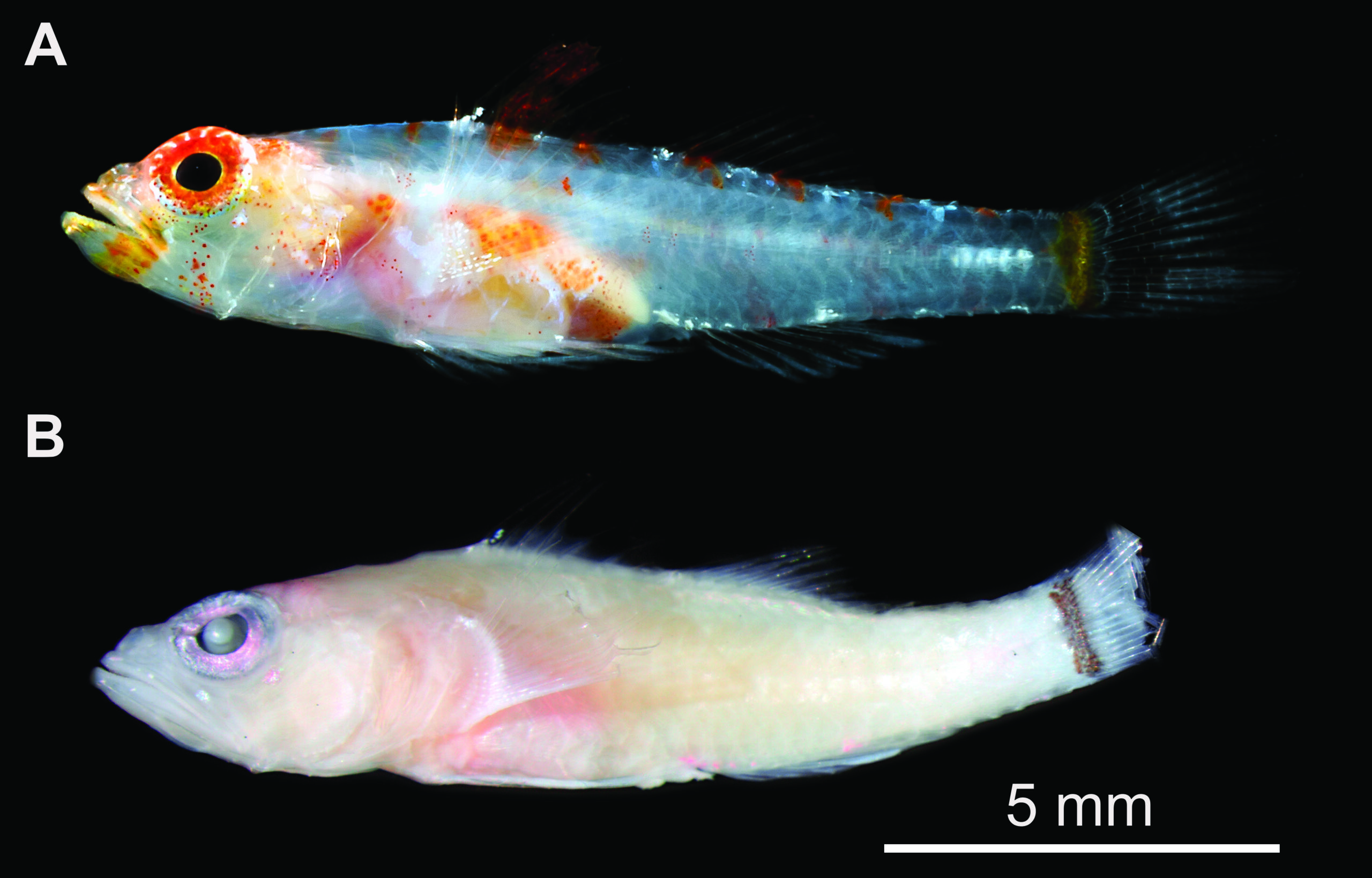A new species of reef-dwelling ocean sleeper has been described from Eastern Australia. Named Tempestichthys bettyae the tiny 12.4mm long fish looks like a goby but is in fact from the sister family of the true gobies, Thalasseleotrididae. The ocean sleepers were only described as a family as recently as 2012, by Anthony Gill and Randall Mooi, and this new fish has been assigned the new genus Tempestichthys, as well as new species status. Before this new species/genus description, there were only three species in the family, one from temperate southern Australia and two from New Zealand.
A single specimen of the new fish was collected by Christopher Goatley and Tane Sinclair-Taylor while on a research cruise in 2019 funded by Parks Australia. It was collected from Marion Reef in the Coral Sea, around 570km east of Townsville, Queensland. Part of the research was to document small fishes which spend their lives hidden within the reef itself. To collect them, colleagues would enclose small areas of reef, about the size of a double bed, using a tent (literally the flysheet off a 3-person tent) and pump in an anesthetic, the paper’s author told Reef Builders. They then rolled back the tent and collected the anesthetized fishes using tweezers. The technique allowed the researchers to collect all of the small fishes from a known area of reef. The team found that in most locations a whopping 50% of all fishes there are smaller than 50mm/2” long, and about 40% of the species on a reef remain smaller than this for their whole lives.
When Christopher Goatley and Tane Sinclair-Taylor collected the fish they took a picture of the specimen and presumed it was an unfamiliar goby. There is only one photo of the fish with live coloration in the world, so the photo was circulated to taxonomists who all gave different suggestions as to what the fish could be.
Goatley then teamed up with goby genetics specialist Luke Tornabene, who used DNA testing to suggest that the fish wasn’t a true goby at all and instead was a member of the ocean sleepers. The single specimen was then micro CT scanned and found to have all the skeletal features of an ocean sleeper. The author admits to not even knowing of the ocean sleeper family before discovering and describing this one, and what’s more this one was colorful and found in tropical waters, when other ocean sleepers are brown and temperate. The CT scan also showed the 12.4mm long fish to be a mature female, complete with eggs and ovaries.
Goatley created the genus Tempestichthys, meaning “storm fish” in reference to the tropical cyclone Oma which followed the research trip through the Coral Sea. The species name bettyae is in honor of Christopher Goatley’s great aunt Betty, and her support. Now that the team has found one tropical ocean sleeper there may be more to be found, either undiscovered in the wild or residing in museum collections.
The paper was published in the Journal Systematics and Biodiversity.



